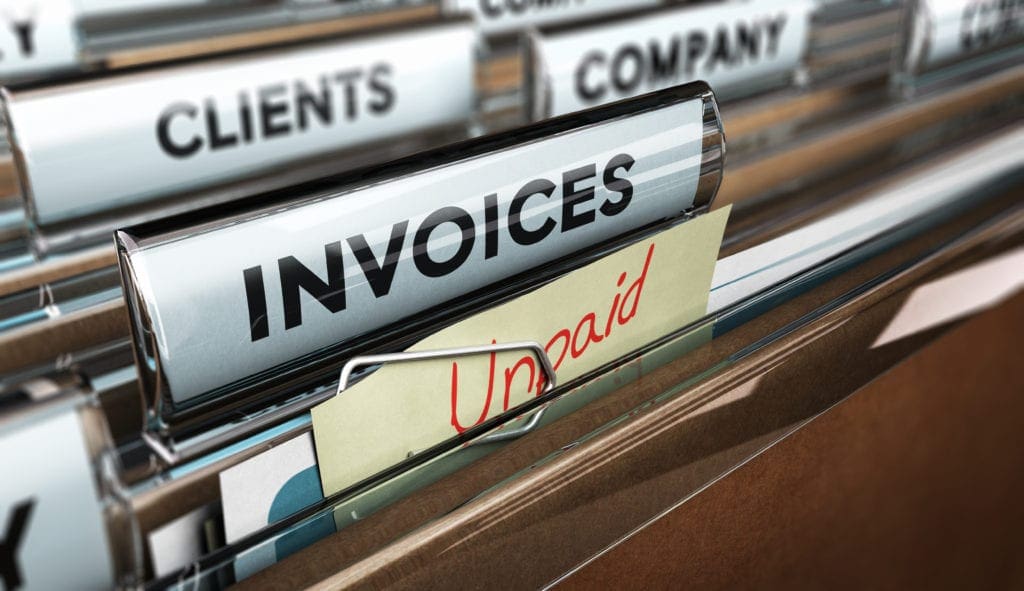Do you want to learn more about invoice processing software? If so you’re in the right place.
Here, we’ll cover the details.
When your company buys a product such as a new computer for your accounts payable (AP) department, you usually receive an invoice from that computer manufacturer requesting payment.
From there your company will take a series of sequential steps to process that invoice and, ultimately, pay the manufacturer.
What does invoice processing mean?
Invoice processing includes the steps from when the invoice arrives with a company until that invoice is paid to a vendor.
There’s a sequence of steps that have to be executed to make sure there are no mistakes and appropriate approvals. Once the steps are completed, the invoices and the amount of the invoice gets posted to your company’s accounting system.
To start this process, you need to execute one of the most important steps in the entire invoice processing sequence: converting the invoice sent by PDF, JPEG, email or paper receipt to a digital format using Optical Character Recognition (OCR) technology.
This technology extracts the invoice data and images and converts them into a document in an editable electronic format.
You then have to check to make sure the vendor name, amount and date on the invoice match the purchase order.
If you find discrepancies, you need to figure out how to reconcile these differences before moving forward. For instance, if the invoice amount exceeds the purchase order amount, you need to contact the vendor and have them send another invoice with the amount equaling the purchase order.
Once that’s resolved, the invoice is sent for approval by the people within your company responsible for approving invoices.
Why is this important?
The approvers, often executives, want to know about the money your company spends and for what purpose. And they may want to accelerate or delay the payment by a few days or weeks depending on the relationship with the vendor.
After approvals, the amount of the invoice is entered into your company’s accounting system as well as your company’s main computer engine, the Enterprise Resource Planning (ERP) system.
Then payment can be made in a variety of ways such as checks, Automated Clearing House (ACH) bank-account-to-bank-account payments and wire transfers.
Read more: Electronic Payment Systems — Everything You Need to Know
What are the steps involved in invoice processing?
There are five major steps involved in invoice processing:
- capturing the invoice data into an electronic editable text format using Optical Character Recognition technology;
- checking to ensure the invoice amount, vendor and date match the purchase order and receipt data;
- resolving discrepancies between invoice, purchase order and receipt amounts or vendor names;
- forwarding the invoice for approvals
- posting the invoice to the accounting system and ERP; and
- paying the invoice.
What is invoice processing software?
Invoice processing software consists of a set of coded instructions for processing invoices. The software follows rules and conditions for how to proceed with invoice automation.
For example, your company may have a rule that any invoice over $1,000 has to be approved by the CEO. The software automatically notifies that CEO about the need to approve an invoice.
Automated invoicing software can follow another rule that your company only wants specific employees to be able to see invoice information. If so, the software follows that rule and only sends the invoices to those specific people.
Invoice automation software provides the intelligence to help your business quickly, efficiently, and accurately move the invoice through the approval process and send the payment.
What is automated invoice processing?
Automated invoice processing reduces the amount of time and effort your employees have to spend processing invoices.
For example, instead of manually keying in invoice information such as vendor name, amount and dates, automatic electronic invoicing eliminates that key stroke process for people; the machine takes care of it.
Using Optical Character Recognition technology, the system automatically extracts invoice information from the PDF, JPEG or other attachments and inserts it into an electronic version of the invoice in an editable format.
During the approval process, automated invoice processing ends the need for a person to chase down an executive to approve an invoice, which is often time-consuming, inefficient and delays payments.
The electronic invoicing system automatically sends that executive an alert that there’s an invoice in their queue that needs to be approved. They can more quickly and easy hit “approve” on their computers and move on.
How do I automate invoice processing?
Your business can automate invoice processing by investing in software designed for this exact purpose.
The software extracts pertinent data from the invoice sent to you by email, PDF or other methods. Then the invoice automation software takes the next step – typically without manual help – of checking to ensure the invoice amount, vendor and data match the purchase order.
Then the invoice management software proceeds to the next juncture, sending the invoice to the people designated to approve invoices.
If the CEO has to approve all invoices over a specific amount, the software knows this based on the rules it has set up, and forwards the invoice electronically to the CEO.
If AP managers can approve invoices under $100, the software knows this also and, without manual help, forwards the invoice for $100 to only AP managers.
Read more: 7 Ways AP Software & Automation Increase Control over Finances
How many invoices can one person process?
On average, an AP clerk can manually process five invoices per hour translating to 12 minutes per invoice, according to Coreintegrator. Using invoice automation, this clerk could process up to 30 invoices per hour (2 minutes per invoice) – six times faster.
The cost and time-saving benefits of automating AP processes are considerable.
It costs businesses approximately $22 to manage the process manually starting with the receipt of the invoice until the payment gets made, notes Aberdeen Research. Using an AP automation process, that cost drops to approximately $10.
Businesses typically spend up to 70 percent less time using AP automation instead of manual processes, Goldman Sachs reports. These companies speed up invoice approvals from approximately 10 days to three days.





